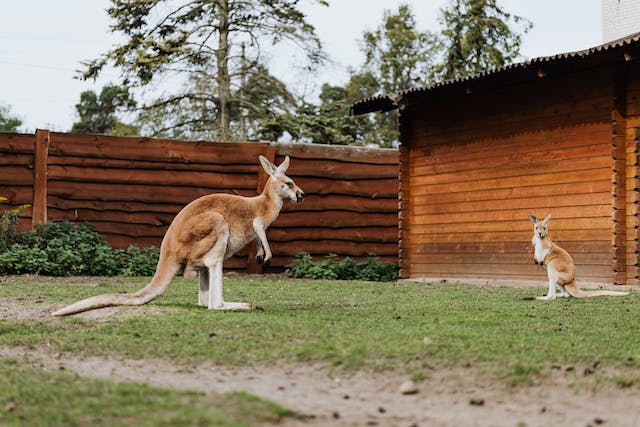
Why don’t more animals use two legs? Because they wouldn’t be able to balance, run as fast, and they can’t use their forelegs for anything other than standing. Walking on two legs has given us several evolutionary advantages which means the ability has been passed on. Most animals don’t get this advantage, so evolution has not seen fit to make them two-legged.
There are several species of animal that can walk on two legs. Humans are obviously the main example. After humans, all birds walk on two legs. Kangaroos and some rodents hop on two legs. Several species of apes can walk on two legs. Why don’t more species have this ability?
Birds walk on two legs because their forelegs have evolved into wings. Birds evolved their wings millions of years ago. They possibly started as forelegs, then became the short forearms that we see in some dinosaurs. From there they might have evolved flaps of skin that let them glide, before evolving fully-fledged wings that let them fly and stay in the sky. Birds walk on two legs because they only have two legs, but many of them don’t walk so much as hop. Large birds have a similar walking gait to us but smaller birds hop. Most birds are more comfortable in the sky and some birds, the swallow for example, can barely use their legs. Penguins, of course, also have two legs, but their forelegs have become flippers.
Kangaroos hop on two legs, but they walk using their forearms. When they are moving slowly or for a short distance, they bend over and support their weight on their forearms before hopping their back legs along and repeating the process. They move fast on just two legs because their legs are basically springs. They have very strong tendons in their legs that store energy and launch them into the air, recompressing when they land. This means they can hop very fast without expending any energy. When we run, we have to use a lot of muscle energy. Kangaroos also have heavy tails that balance them and act as a counterweight. As well as this, the motion of jumping pulls their abdomen up and down, inflating and deflating their lungs.
Some apes can also walk on two legs, but they don’t do so for very long. They prefer to use their arms for balance, knuckling along, or to be in the trees. They can walk on two legs, but they don’t have the build to do it for long. Their feet are a different shape to ours. We have evolved an arch in the middle of our feet which makes them rigid when we are walking but also flexible if we need them to be. The arch gives us some spring as well, reducing the amount of energy we need to walk. The feet of apes are very much like their hands and are used for climbing and gripping. They are excellent for that, but not so good for walking. The spines of apes are also curved and not an S shape like ours. They don’t support the ape when they walk upright. They have shorter legs and are less efficient when walking.
All other animals walk on four legs because walking on two legs would not be an advantage for them. Herbivores spend most of their time grazing and they use their mouths to rip up grass. Four legs allow them to balance without having to expend energy or without having to lean down to the food source. Some animals that eat high up leaves can stand against a tree, but they also return to four legs because it is easier to balance. Predators have four legs because it gives them better balance because it also gives them better speed. Apart from a kangaroo, two-legged animals cannot run quickly. We are a good example. Our fastest sprinters are not as fast as some fairly slow four-legged animals. We have spines that are upright and more concerned with stability than speed. Four-legged animals have a spine that is horizontal to the floor and it can act as a spring, giving them more thrust. Speed is also decided by how much force you can impart to the ground. Four legs will be in contact for longer and be able to impart more force than two legs ever could. Four legs give more grip for running.
There is no real advantage for an animal to only use two legs. We evolved to use only two legs because there were advantages. We can free up our hands to carry things or use tools. We can walk and run further because we can eat and drink while we are moving. Animals can’t. It also allowed all of the other changes that have created the society that we have now. And this is what I learned today.
Sources
https://ucmp.berkeley.edu/vertebrates/flight/evolve.html
https://web.stanford.edu/group/stanfordbirds/text/essays/Walking_vs_Hopping.html
https://www.bbc.com/news/science-environment-29603578
https://www.discoverwildlife.com/animal-facts/mammals/how-and-why-do-kangaroos-hop
https://www.wired.com/story/why-even-the-fastest-human-cant-outrun-your-house-cat/
